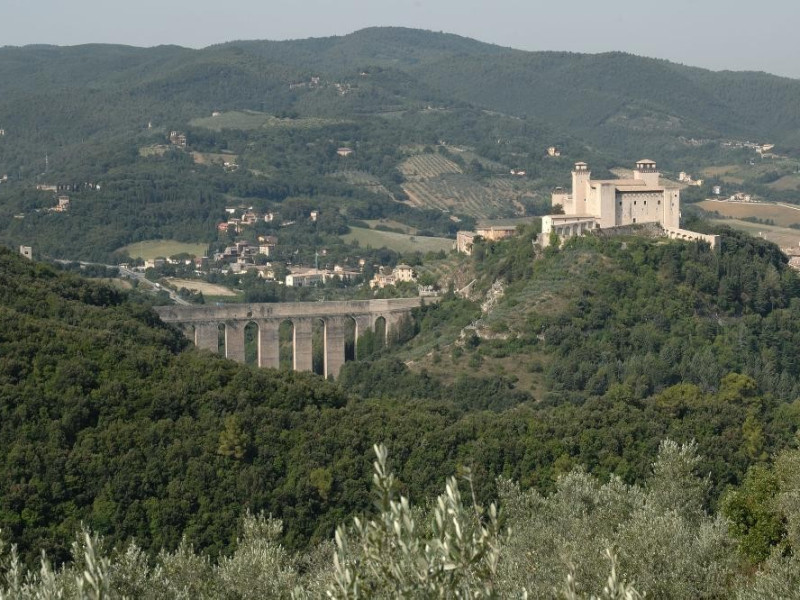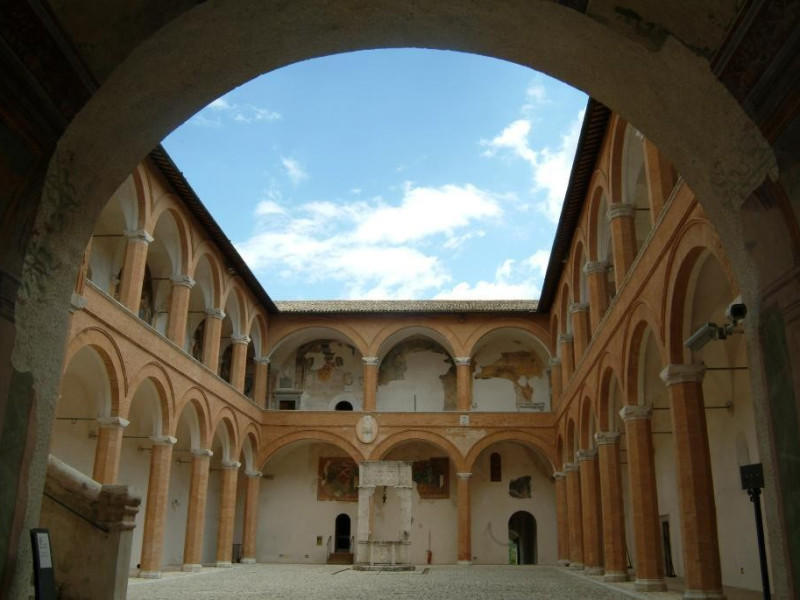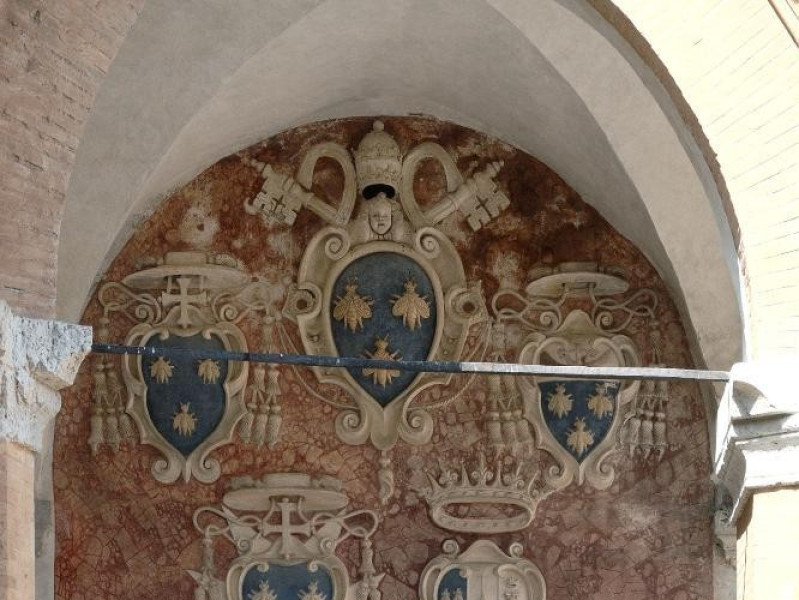Luogo - Museum
Rocca Albornoziana
Where
Piazza Campello, 1, Spoleto (Perugia)
The “Rocca” – Spoleto Fortress
The Rocca Albornoziana is located on the summit of Sant’Elia hill overlooking the historical Spoleto city center.
Built under the direction of the Spanish Cardinal Gil Alvarez Carrillo de Albornoz—around 1360—the fortress was a Papal Legate and Pope see. Today, with the progressive recovery of its rooms and frescoes that still ornate its walls, the complex has finally re-found its strategic collocation for control of the great Roman road Via Flaminia, that once was a fulcrum and ideal point of departure for military actions aimed at recovering the lost territories of Umbria, Marche and Emilia-Romagna. While the fortress constituted the pivotal center of the defensive system of the Papal State, it was conceived of as a residential home, first for the Governors of the Duchy, and after for Governors of the city and Papal Legates, and was therefore frescoed like the many refined patrician dwellings of the time.
The Rocca, whose construction started in 1359, was built by order of the Spanish Cardinal Gil Alvarez Carrillo de Albornoz with the aim of subjugating the town again, under the rule of the Papal State. The architect from Gubbio, Matteo di Giovannello, better known as Gattapone, was commissioned for the work. There are six towers, four at the corners and two median towers along the wall. Internally the main body of the edifice stands in-between two courts: the Ward of Arms to the south, and the Ward of Honor to the north. With the progressive salvaging of rooms and frescoes the complex has finally recovered its early charm. The Hall of Honor and the Camera Pinta—literally ‘painted room’, frescoed with a rare chivalrous cycle dating from the 15th century—are evidence of their old beauty.
By affirming them, successfully, as instruments for defense and maintaining peace in town, all strongholds like the Roccas were symbols of ruling powers. Their purpose was to guarantee the obedience and submission of the people to the institutions of the Church, and they became the most evident characteristic of the Church’s domination and conquests. This was the case with the Rocca of Spoleto and those of Narni, Orvieto, Assisi, Todi and Spello.













